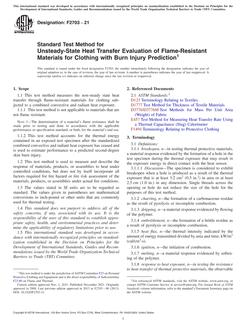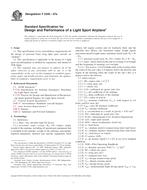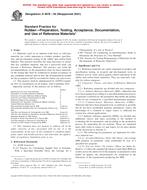1.1 This test method covers an analytical procedure for determining the transmissivity, storage coefficient, and possible location of boundaries for a confined aquifer with a linear boundary. This test method is used to analyze water-level or head data from one or more observation wells or piezometers during the pumping of water from a control well at a constant rate. This test method also applies to flowing artesian wells discharging at a constant rate. With appropriate changes in sign, this test method also can be used to analyze the effects of injecting water into a control well at a constant rate.
1.2 The analytical procedure in this test method is used in conjunction with the field procedure in Test Method D 4050.
1.3 Limitations – The valid use of this test method is limited to determination of transmissivities and storage coefficients for aquifers in hydrogeologic settings with reasonable correspondence to the assumptions of the Theis nonequilibrium method (see Test Method D 4106) (see 5.1), except that the aquifer is limited in areal extent by a linear boundary that fully penetrates the aquifer. The boundary is assumed to be either a constant-head boundary (equivalent to a stream or lake that hydraulically fully penetrates the aquifer) or a no-flow (impermeable) boundary (equivalent to a contact with a significantly less permeable rock unit). The Theis nonequilibrium method is described in Test Methods D 4105 and D 4106.
1.4 This standard does not purport to address all of the safety concerns, if any, associated with its use. It is the responsibility of the user of this standard to establish appropriate safety and health practices and determine the applicability of regulatory limitations prior to use.
Product Details
- Published:
- 09/15/2008
- Number of Pages:
- 7
- File Size:
- 1 file , 200 KB


